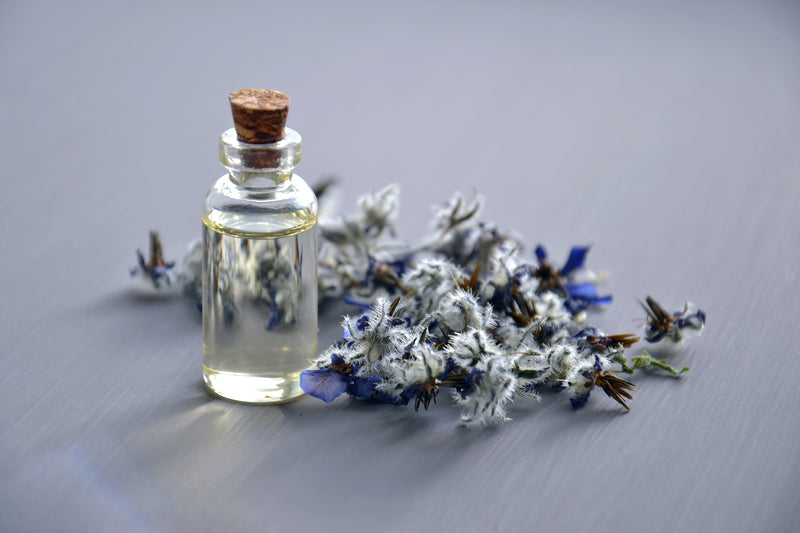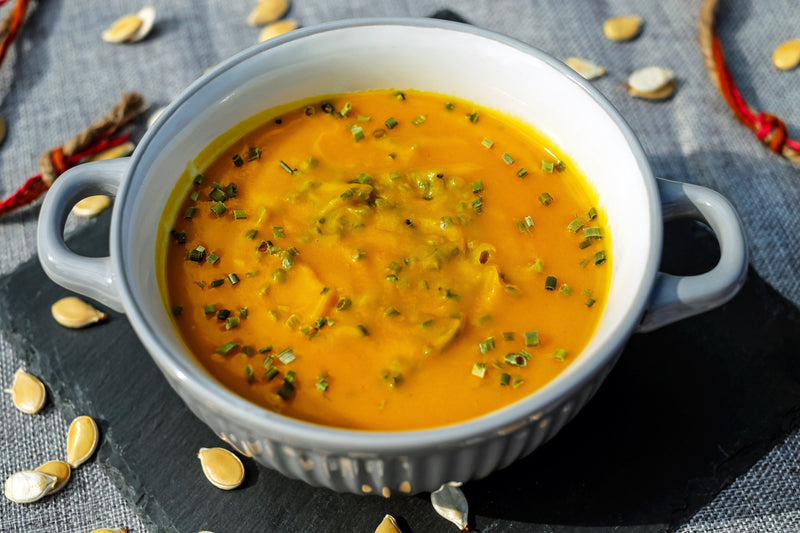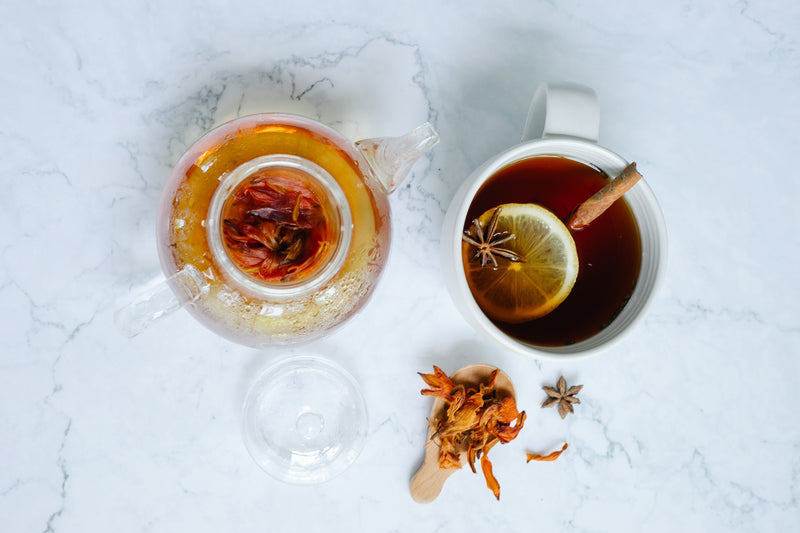"Ghritam" or "Ghee" is a type of clarified cultured butter that has been used for centuries in traditional Indian medicine (Ayurveda) and cooking. It is one of the four types of fats with medicinal healing qualities that are mentioned in the Ayurvedic texts. It is believed to offer several health benefits, both when consumed internally and when applied externally.
Is Ghritam / Ghee Vegan ?
Ghritam made from butter that is derived from dairy milk (from Cows, Buffalo, Sheep, Goat, etc.) is not vegan. Vegan Ghee that is available in stores is not Ghee in its true sense since it does not have the subtle qualities and effects of the actual Ghee.
What is Ayurvedic Cultured Ghee ?
Ayurvedic Cultured ghee is made by first adding yogurt culture to A2 organic, grass fed Ahimsa (cruelty free) milk. This cream is left to get cultured (cultured sour cream). It is then hand churned to separate the milk fat, which is the cultured butter. When this cultured butter is further clarified by heating, it becomes cultured ghee, with the most delicious aroma and taste.”
Since all perishable milk solids of butter have been removed in ghee, it can be stored for longer periods - if stored in an airtight container at room temperature away from sunlight.
Here are some of the potential benefits of Ghritam (Ghee):
Internal Benefits:
- Nutrient-Rich Ghee in Ayurvedic Cooking : Ghritam is rich in essential fatty acids, fat-soluble vitamins (A, D, E, and K), and other nutrients. These nutrients are believed to contribute to overall health and well-being. These nutrients are essential for various bodily functions, including immune system support, bone health, and skin health.
- Ghee for Digestive Health : Ghritam is considered to have a lubricating and nourishing effect on the digestive tract. According to Ayurveda, ghritam is considered to be a "sattvic" food that supports digestion. It is believed to help balance digestive fire (agni) and improve absorption of nutrients from food. It is believed to help improve digestion, reduce inflammation in the gut, and promote healthy gut flora. It contains butyric acid which helps promote digestive health.
- Lubricates Joints : In Ayurveda, Ghritam is believed to help lubricate the joints and support joint health. Ghritam can help maintain joint flexibility and reduce the risk of joint-related discomfort.It is often used as an ingredient in traditional formulations aimed at promoting joint mobility.
- Boosts Immunity : Some traditional practices suggest that consuming ghritam may help strengthen the immune system due to its nutrient content and potential anti-inflammatory properties.
- Brain Health : Ghritam is thought to support brain health and cognitive function. It is often used in Ayurvedic practices to enhance memory and concentration. In Ayurveda, ghritam is thought to have a positive impact on the mind and nervous system. It is sometimes used in practices such as "nasya," where a small amount of ghritam is applied to the nasal passages to promote mental clarity and balance.
- Energy and Stamina : The healthy fats in ghritam are a source of sustained energy. In Ayurveda, it's believed that consuming ghritam can provide vitality and endurance. Many of the Rasayana preparations in Ayurveda have ghritam as a base ingredient.

- Ghee in Ayurvedic Detoxification : In Ayurveda, ghritam is considered a carrier of herbal compounds, making it an effective medium for delivering herbs to various tissues and promoting detoxification. Ayurvedic ghritam preparations have different herbs infused into the ghritam using traditional methods.
- Ghee for Weight Management : Contrary to common misconceptions, moderate consumption of ghritam may be beneficial for weight management. It is believed to enhance metabolism and provide a feeling of satiety.
- Ghee in Ayurvedic Medicine : Ghritam is often used as a carrier for herbs and spices in Ayurvedic formulations. It's believed to enhance the absorption and effectiveness of certain herbal compounds.
- Ghee in Ayurvedic Therapies : Ghritam is used in various Ayurvedic therapies, such as "panchakarma," a detoxification and rejuvenation process. It's sometimes used as a medium for administering herbal preparations.
- Antioxidant Properties : It is believed that ghritam contains antioxidants that can help protect cells from oxidative stress and support overall health.
- Aromatic Qualities : Depending on how it's prepared, ghritam can have a pleasant aroma that is used in Ayurvedic rituals and practices to enhance sensory experiences.

External Benefits:
- Ghee for Skin Care : It may help improve skin texture and provide relief from dryness and irritation. Ghritam is used topically in Ayurvedic skincare for its moisturizing and nourishing properties. It's believed to help soften the skin, reduce dryness, and support a healthy complexion.
- Ghee for Wounds : In Ayurveda, ghritam is sometimes applied to wounds and burns for soothing.
- Ghee for Hair Care : Some people use ghritam as a hair treatment to moisturize and condition the hair, potentially reducing frizz and enhancing shine.
Disclaimer: It's important to note that while ghritam has a long history of use in Ayurveda and traditional practices, scientific research on its specific health benefits is ongoing. As with any dietary or health practice, individual responses can vary, and it's advisable to consult with a healthcare professional and an Ayurvedic Practitioner before incorporating ghritam or any new ingredient into your routine, especially if you have specific health conditions or concerns. Additionally, when consuming ghritam, moderation is key, as it is calorie-dense due to its fat content. Those with dairy allergies or lactose intolerance should avoid ghee, as it is derived from milk and contains trace amounts of dairy proteins and sugars.






















